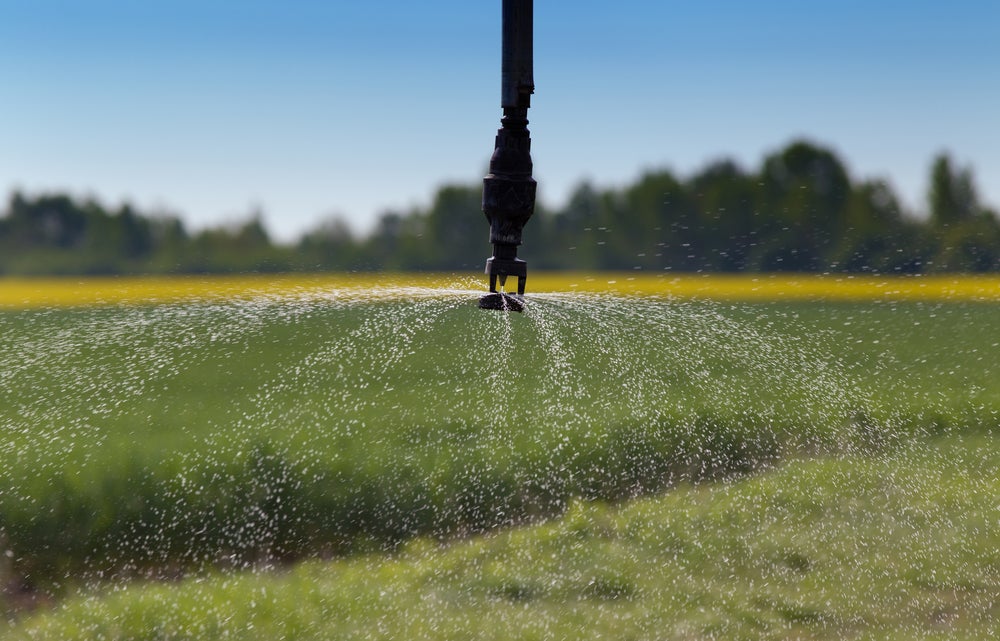The Of Rust Preventer
Table of ContentsIrrigation Water Treatment Fundamentals ExplainedRumored Buzz on Rust Controller3 Simple Techniques For Rust PreventerHow Irrigation Rust Preventer can Save You Time, Stress, and Money.

A common drilled-irrigation well has a screen at the bottom to let in water. sper chemical corporation. It also has nonperforated pipeline, called casing, which is connected to the screen and increases to the surface area. Numerous wells have a filter pack around the screen to prevent fine sand in the aquifer from entering the well.
Generally, a well with a gravel pack can have a screen with bigger openings. The water level in a well that is not being pumped will rise to an elevation determined by the type of aquifer and surrounding geologic conditions. This is called the fixed water level and can differ from year to year, depending on recharge to the aquifer.
When a pump is switched on, the water will drop to what is called the pumping water level. The difference in between the static water level and pumping water level is the drawdown in the well. Drawdown is a step of the hydraulic head required to push water through the aquifer product into the well at the desired circulation rate. The specific capability of a well needs to be determined and recorded at the same time each year, as shown in. August is the very best time because it generally is the driest month. During August, the majority of irrigation pumps have actually been on for a long time, causing pumping and fixed water levels to be at their least expensive of the year.
The Buzz on Rust Preventer
Years 3 and five have actually been overlooked of Table 1, however examining the data from year six reveals that the performance has decreased considerably. Increased drawdown frequently will minimize the circulation rate due to the higher lift needed from the pump, and it can increase pumping energy requirements. For that reason, having a precise circulation meter on each well and a useable gain access to port to the well case,, is necessary.
It ought to be at least 1 inch in size, however a 2-inch size gain access to is preferred. For your convenience, a sample well performance information sheet has actually been click included with this publication. rust controller. Well screen problems typically fall into 3 classifications: physical clog, biological clog and chemical obstruction. No matter how screen blockage takes place, it increases the drawdown and pumping energy requirements.
This computation is based upon 900 hours of pumping time and an off-peak electrical rate of 7 cents per kilowatt-hour. A build-up of sand, silt and other materials inside the well screen can reduce water flow into a well. As they collect in the bottom of the screen, the inlet area is reduced.
The most typical are holes in the casing from rust, migration of fines from overpumping, poor placement or sizing of the gravel pack, screen openings that are too large and poor well advancement following building and construction. "Bailing" these materials from a well is relatively simple, but the pump needs to be eliminated.
Not known Facts About Irrigation Rust Preventer

The quantity next page of iron might differ from very low to extremely high, depending upon the depth and area of the aquifer. Figuring out the existence of iron in watering water is easy since a rusty color will stain pumps, pipelines and irrigation systems. Typically, the rotten-egg smell of hydrogen sulfide gas likewise will be obvious when the pump is running (municipal water treatment).
3 parts per million (ppm), iron germs issues will emerge. Even small amounts of iron supply a source of energy for the development and development of iron bacteria. These bacteria form a slimy natural compound on the well screen, pump intake and pump column, and in the water-bearing aquifer products surrounding the screen,.

The 7-Second Trick For Municipal Water Treatment
Germs that produce a biofilm or slime coexist with iron and sulfate-reducing bacteria. The by-product of these germs is he has a good point a slime that typically can be seen on pumps removed from a well. The slime can plug screen openings, the gravel pack and often the aquifer materials outside the screen. Chemical obstruction results from the deposition of minerals in the type of scales or incrustation on the well screen,.
The majority of mineral deposits on well screens are calcium and magnesium carbonates or calcium and magnesium sulfates. They speed up out of the water where the water speed is highest and the pressure is least expensive: at or near the entryway to the well screen. These are the same products that develop around the ends of faucets in numerous houses.